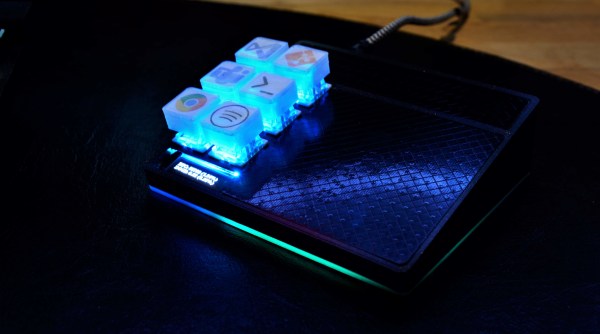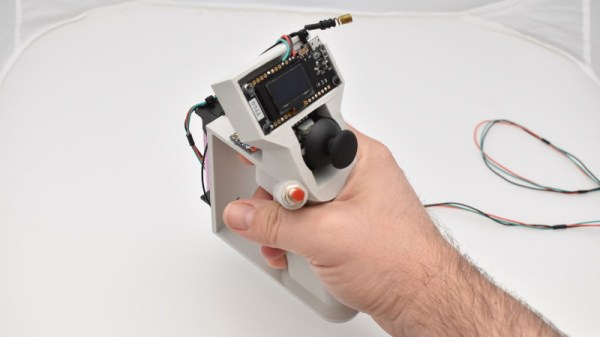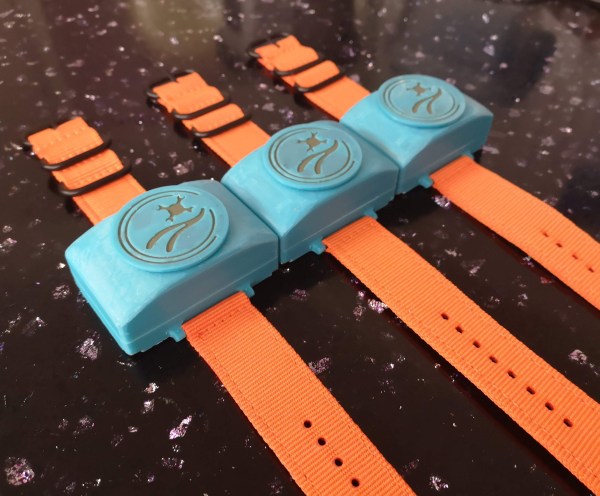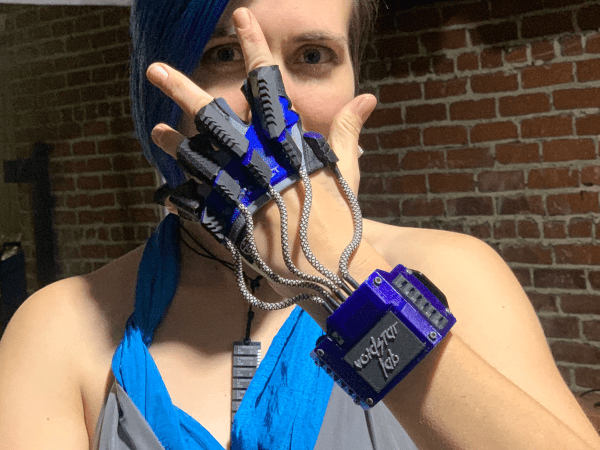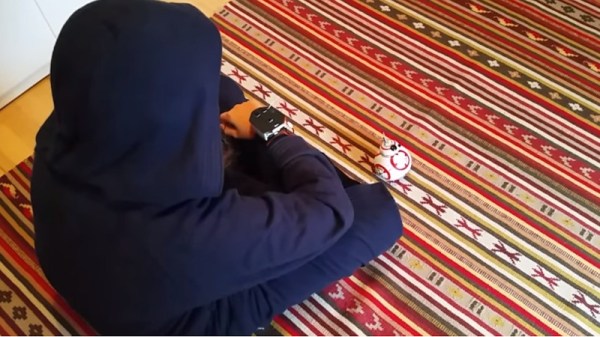[jakkra] bought a couple of capacitive touchpads from a Kickstarter a few years ago and recently got around to using them in a project. And what a project it is: this super macro pad combines two touchpads with a 6-pack of regular switches for a deluxe gesture-sensing input device.
Inside is an ESP32 running TensorFlow Lite to read in the gestures from the two touchpads. The pad at the top is a volume slider, and the square touchpad is the main input and is used in conjunction with the buttons to run AutoHotKey scripts within certain programs. [jakkra] can easily run git commands and more with a handful of simple gestures. The gestures all seem like natural choices to us: > for next media track, ∧ to push the current branch and ∨ to fetch and pull the current branch, s for git status, l for git log, and the one that sounds really useful to us — draw a C to get a notification that lists all the COM ports. One of the switches is dedicated to Bluetooth pairing and navigating menus on the OLED screen.
We love the combination of inputs here and think this looks great, especially with the double touchpad design. Be sure to check out the gesture demo gif after the break.
Gesture input seems well-suited to those who compute on the go, and a gesture glove feels like the perfect fit.
Continue reading “Gesture-Detecting Macro Keyboard Knows What You Want”

